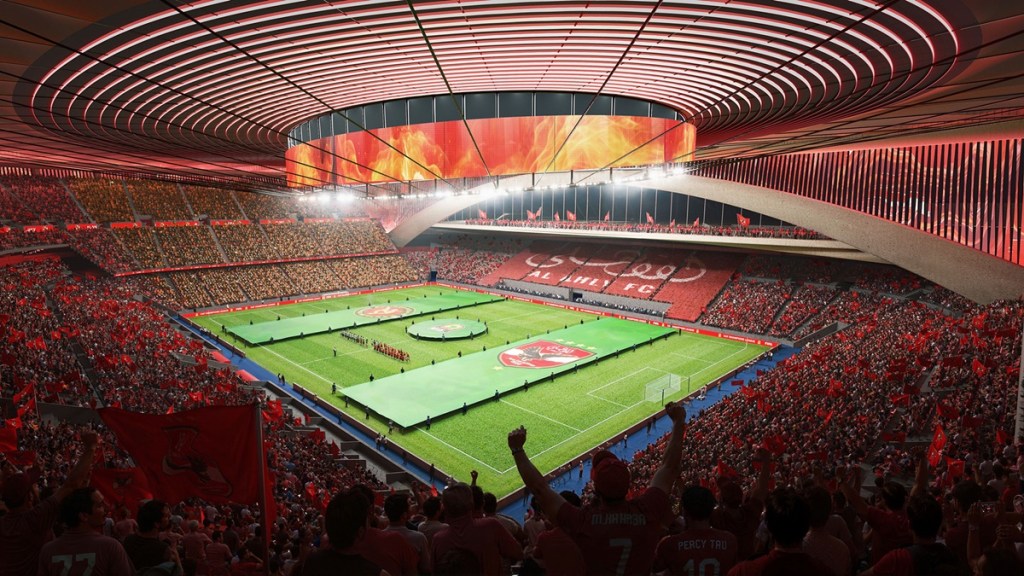Since rising global temperatures due to climate change are impacting sports arenas and the broader sporting world, unpredictable weather, and other climate-related events are creating challenges for athletes, venues, and event organisers. Making sports arenas resilient has prompted FIFA (Fédération Internationale de Football Association) to announce that all 2026 World Cup games will be played in covered stadiums.
FIFA’s climate-conscious shift for 2026
While learnings from the 2025 Club World Cup in the US have led FIFA to sharply intensify heat-mitigation strategies heading into the 2026 tournament, indoor venues and roofed stadiums will be prioritised for daytime matches, especially in host cities like Atlanta, Dallas, Houston, and Vancouver, which have covered or air-conditioned facilities.
But only around 40% of matches will take place in indoor venues. Even if existing roofed stadiums provide protection, most host cities lack full cooling systems. Mandatory cooling measures include frequent hydration breaks, extended halftime pauses, and potential kickoffs scheduled outside peak heat hours, measures informed by FIFPRO (International Federation of Professional Footballers), and climate science warnings.
Sustainable design and human comfort can align while policy and infrastructure must evolve together. With 104 matches spread across North America and expanding from 32 to 48 teams, robust, climate-responsive stadiums are no longer the exception, they’re essential.
Despite these green flags, FIFA has scheduled the final for July 19, 2026, at 3 pm local time at the MetLife Stadium in the Meadowlands Sports Complex in East Rutherford, New Jersey, near New York City, raising serious concerns about player and spectator safety under potential sweltering temperatures. Thus, these shifts underscore an urgent reevaluation of match scheduling, climate infrastructure, and athlete welfare in major tournaments.
Global examples of sustainable stadium design
During the 2022 World Cup held at Al Janoub Stadium in Qatar, they used retractable PTFE (Poly Tetra Fluoro Ethylene) fabric roofs and active cooling to lower spectator zones to 18 degrees centigrade, demonstrating how aerodynamic form and HVAC technology can work in harmony.
Al Bayt Stadium, another Qatar stadium, features a tent-inspired retractable roof and earned high sustainability ratings via Global Sustainability Assessment System (GSAS) certification. As post-World Cup plans evolve, its design continues to prioritise environmental efficiency and adaptability. There is a new stadium in Egypt, which can turn as a venue for not just games but concerts and events, and uses sustainable architecture practices to leverage the earth’s natural cooling properties to help regulate temperatures within the stadium. Developed by architectural firm Gensler, the Al-Ahly Stadium in Giza, Greater Cairo, is located close to the Sphinx International Airport in Giza, and designed to be an iconic 42,000-seater sustainable venue. The stadium’s pitch is recessed 15 metres into the ground, creating a sunken bowl effect. This design element accommodates seating capacity within height restrictions imposed by the nearby International Airport.
The design is an asymmetric cable-net roof supported with two-tiered stands on three sides bringing fans closer to the action. The entrance plaza includes cafés, a club museum, a fan walkway and a night-ready digital exterior that transforms the stadium into a glowing landmark. Another football stadium in Brazil, Arena da Amazônia, is designed for natural ventilation and reflective facades to reduce internal temperatures. It also features a white, reflective exterior, extensive shading over seating areas, and numerous ventilation openings in the facade.
But, despite these efforts, the high heat and humidity periods in the 2014 World Cup, particularly in northern and tropical regions, increased the physiological demands on players, and has sparked criticism over player fatigue and fan discomfort.







